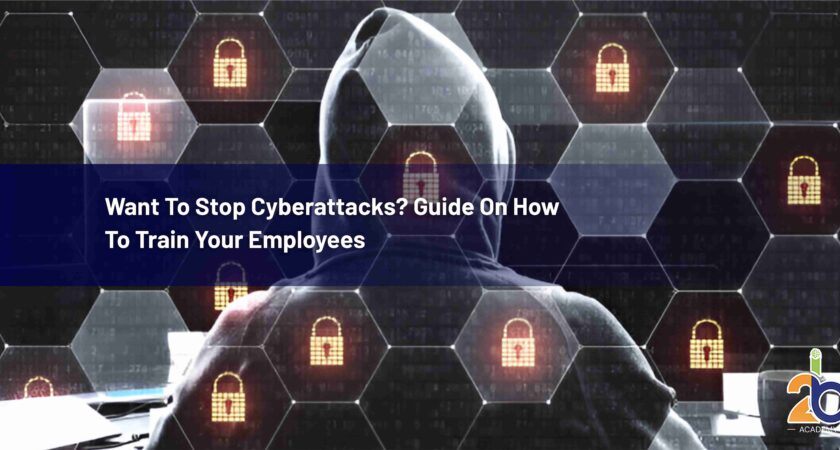Did you know that according to IBM, human error is a factor in over 95% of data breaches?
While firewalls and complex security systems are crucial, your employees are often the first line of defense against cyberattacks. Investing in a strong cybersecurity awareness training program empowers your team to identify threats, protect sensitive information, and ultimately, keep your company safe.
Keep reading the guide to thoroughly understand everything you need to know about training your employees for cybersecurity. We’ll cover what cybersecurity awareness training is, why it’s important, what topics to include, and how to make the training engaging and effective.
Why Is Cybersecurity Awareness Training Important?
Cybersecurity awareness training educates employees about cyber threats, best practices for protecting sensitive information, and how to identify and report suspicious activity. Effective training programs should be:
- Regularly updated
The cyber threat landscape is constantly evolving, so your training should reflect the latest threats and tactics used by cybercriminals.
- Engaging and interactive
Training that is dry and boring will not be effective. Use a mix of formats such as videos, quizzes, and real-world scenarios to keep employees engaged.
- Tailored to your company
The specific needs of your company will vary depending on your industry, the type of data you handle, and the size of your organization. Your training program should be tailored to address your company’s unique risks.
Key Things To Include In Your Cybersecurity Awareness Training
Here are some of the key topics that should be covered in your cybersecurity awareness training program:
Topic 1: Understanding Cyber Threats
Educate your employees about the different types of cyber threats, such as phishing, malware, ransomware, social engineering, and denial-of-service attacks. Explain how these threats work and how they can impact your company.
Topic 2: Password Security
Strong passwords are essential for protecting sensitive information. Train your employees on how to create strong passwords, the importance of using unique passwords for different accounts, and how to manage their passwords securely. Consider implementing a password manager to help employees create and store strong passwords.
Topic 3: Phishing Awareness
Phishing emails are one of the most common cyberattacks. Train your employees on how to identify phishing emails, including red flags like suspicious sender addresses, urgency tactics, and grammatical errors.
Topic 4: Social Engineering
Social engineering attacks exploit human psychology to trick employees into revealing sensitive information or clicking on malicious links. Train your employees to be cautious of unsolicited calls, emails, and social media messages, and to verify the identity of the sender before responding.
Topic 5: Safe Browsing
Train your employees on how to browse the web safely, including avoiding suspicious websites, being cautious of downloading files from unknown sources, and keeping their web browsers and plugins up to date.
Topic 6: Data Security
Educate your employees about the importance of protecting sensitive data, such as customer information and financial data. This includes understanding company policies on data handling, how to properly dispose of sensitive documents, and the importance of being careful about what information is shared online.
Topic 7: Reporting Suspicious Activity
Encourage your employees to report any suspicious activity, such as phishing emails, malware infections, or unauthorized access attempts. Make it clear how employees should report these incidents and assure them that they will not be penalized for reporting a potential threat.
Cybersecurity Awareness Training: Engaging And Effective
Here are some tips for making your cybersecurity awareness training program engaging and effective:
Use A Variety Of Training Methods
- Don’t rely solely on lectures. Use a mix of formats such as videos, quizzes, and more.
- Simulations and role-playing exercises can help employees practice their skills in a safe environment.
- Gamification can make training more fun and interactive. For example, you could create a cybersecurity escape room or a points system for completing training modules.
- Microlearning delivers bite-sized training modules that are easy to fit into busy schedules.
Make It Relevant To Your Employees
Use real-world examples that are relevant to your industry and the types of threats your employees are most likely to face. For example, if you work in healthcare, focus on training employees on how to identify phishing emails that attempt to steal patient data.
Reinforce Training Regularly
Don’t just train your employees once and forget about it. Schedule regular training sessions throughout the year to keep cybersecurity top of mind. Use phishing simulations and security awareness campaigns to keep employees on their toes.
For Instance, Ditch generic attacks! Use real-world examples relevant to your industry. In healthcare, focus on identifying phishing emails targeting patient data. In finance, emphasize protecting sensitive financial information.
Get Leadership Buy-In
Leadership buy-in is essential for the success of any training program. Make sure your company leaders are committed to cybersecurity and are actively involved in promoting the importance of training.
Additional Considerations
Here are some additional things to consider when developing your cybersecurity awareness training program:
- Target Audience
Tailor your training program to the specific needs of your different employee groups. For example, IT staff will need more in-depth training than sales staff.
- Training Budget
There are a variety of training options available, ranging from free online courses to paid training programs offered by cybersecurity professionals. Choose a program that fits your budget and needs.
- Training Delivery Method
You can deliver training in person, online, or through a combination of both methods. Choose the method that is most convenient for your employees and your organization.
- Tracking And Measurement
It is important to track the effectiveness of your training program. This could involve measuring employee knowledge retention, the number of reported phishing attempts, or the number of security incidents.
By tracking your results, you can identify areas for improvement and ensure that your training program is having a positive impact.
Final Words
Cybersecurity awareness training is an essential part of any organization’s cybersecurity strategy. By investing in a well-designed training program, you can empower your employees to identify and prevent cyberattacks, ultimately keeping your company safe.
Remember, cybersecurity is a shared responsibility. By working together, you can create a culture of security within your organization and significantly reduce your risk of a cyberattack.


